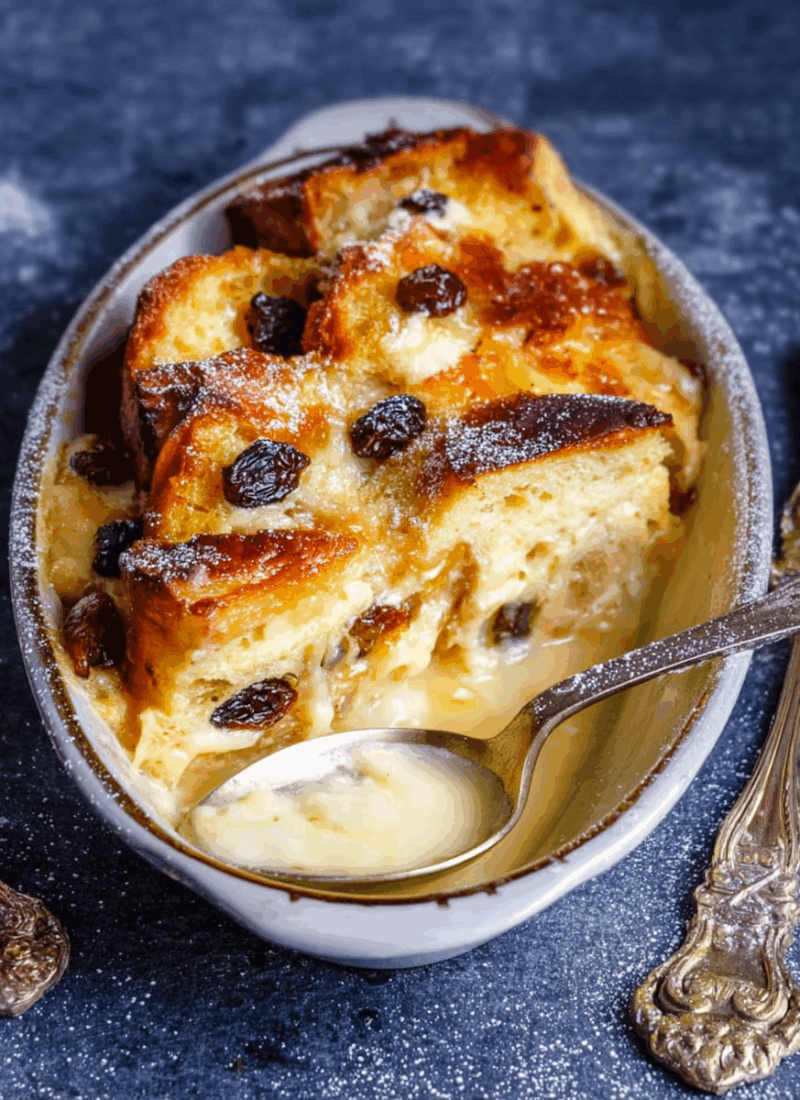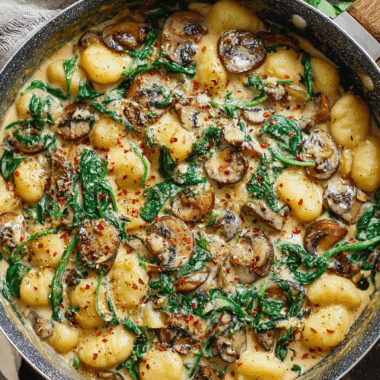This classic bread and butter pudding is a comforting dessert made with layers of buttered bread, custard, and dried fruits, baked until golden and delicious. It’s a perfect way to use up leftover bread, and it comes together easily with a rich, creamy texture. Ideal for a cozy family dessert or to serve at a dinner party!
Full Recipe:
Ingredients
-
6 slices of white bread (preferably a day or two old)
-
50g (about ¼ cup) unsalted butter, softened
-
¼ cup of currants or raisins (optional)
-
2 cups of milk
-
2 large eggs
-
¼ cup of sugar (plus extra for sprinkling)
-
1 teaspoon of vanilla extract
-
¼ teaspoon of ground cinnamon (optional)
-
A pinch of salt
Directions
-
Prepare the bread:
Preheat your oven to 350°F (175°C). Butter the bread slices on both sides with the softened butter. Cut the bread into triangles or strips. If you’re using currants or raisins, sprinkle some on the bread slices and set aside. -
Make the custard:
In a medium bowl, whisk together the eggs, sugar, vanilla extract, cinnamon (if using), and a pinch of salt. In a separate pot, heat the milk over medium heat until it is warm but not boiling. Gradually add the warm milk to the egg mixture while whisking to prevent curdling. -
Assemble the pudding:
In a greased baking dish, layer the buttered bread slices (and fruit if using) in an even pattern. Pour the custard mixture over the bread, making sure to soak it all. Press the bread down slightly to ensure it’s covered with the custard. Let it sit for 5-10 minutes to absorb the custard. -
Bake:
Sprinkle a little sugar on top for a golden crust. Place the dish in the preheated oven and bake for about 30-40 minutes or until the top is golden and the custard has set (a knife inserted in the center should come out clean). -
Serve:
Serve warm with a drizzle of cream or vanilla ice cream for extra indulgence. Enjoy!
Nutritional Information (Approx per serving)
-
Calories: 260 kcal
-
Carbohydrates: 34g
-
Protein: 6g
-
Fat: 12g
-
Saturated Fat: 7g
-
Sugar: 15g
-
Fiber: 2g
This traditional bread and butter pudding is the epitome of comfort and a great way to treat yourself or family to a warm dessert.








